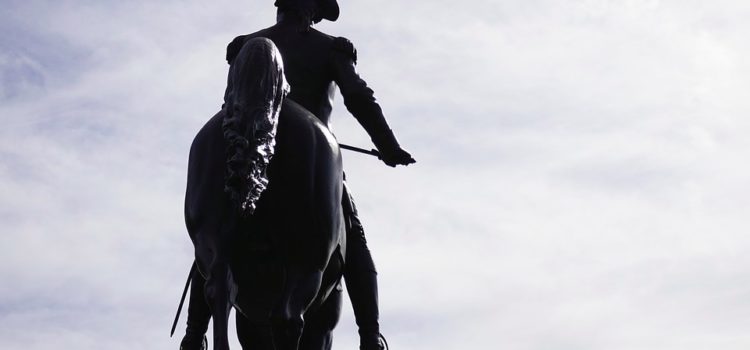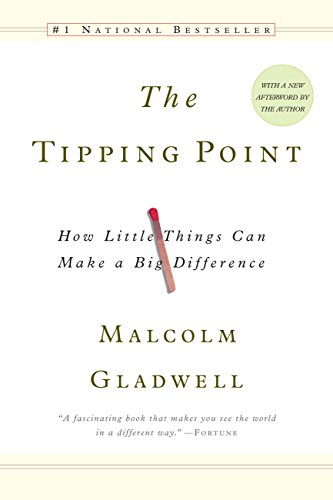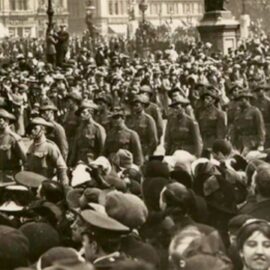

This article is an excerpt from the Shortform summary of "The Tipping Point" by Malcolm Gladwell. Shortform has the world's best summaries of books you should be reading.
Like this article? Sign up for a free trial here .
What happened during the midnight ride of Paul Revere? Why was Paul Revere so successful in spreading his message? Why haven’t you heard of his counterpart, William Dawes? Why is he a major influencer in the history of America? What can modern influencers learn from him?
We’ll cover why the midnight ride of Paul Revere was so successful, and what it teaches us about the best way to communicate and spread our ideas.
The Midnight Ride of Paul Revere
We can learn about good communication strategies by examining the Paul Revere story and why Paul Revere’s ride was so successful.
In April of 1775, a silversmith named Paul Revere rode his horse through the towns surrounding Boston in the middle of the night, spreading the news that he expected the British to attack the next morning and mobilizing locals to act. He was so effective that the colonial militia beat the British that following morning, in a battle that sparked the American Revolution. Revere helped spread the news throughout the entire region in a matter of hours, making his midnight ride one of the most famous historical examples of a word-of-mouth epidemic.
That same night, a fellow Bostonian named William Dawes took a midnight ride in the opposite direction as Revere to help spread the message, but hardly anyone mobilized in the towns he rode through. What made the midnight ride of Paul Revere so much more successful than Dawes’s?
First, Revere was a Connector. He was not only social and gregarious, but also a fisherman, hunter, cardplayer, theater-goer, businessman, and a member of the Masonic Lodge and several social clubs and community organizations; he was part of many different social circles in the Boston area. When he made his midnight ride, Revere was so well-connected that he knew who to alert — the local militia leaders and key figures in the community — to make the biggest impact. This was one aspect that led to the success of the midnight ride of Paul Revere.
Dawes, by contrast, likely had an average social circle, and his connections were probably much weaker in the area outside of Boston, where he was trying to spread the news. When he knocked on doors that night, he didn’t know whether he was at the home of a local leader or a farmer who had little power to further spread the message.
Second, Revere was a Maven. He was involved in a community group that actively collected information on the activities of British troops. He had warned local militia before about British schemes he had learned of. People knew that Revere was a reputable source of information about the British troops, so when they heard his warning on the night of his midnight ride, it carried more weight. This was the second aspect that led to the success of the midnight ride of Paul Revere.
Paul Revere’s Midnight Ride and Connectors
The midnight ride of Paul Revere was successful because Paul Revere was a Connector. What’s a Connector?
Connectors are people who seem to know everyone. You can find Connectors in every walk of life; they are sociable, gregarious, and are naturally skilled at making — and keeping in contact with — friends and acquaintances.
Connectors, like Paul Revere, tend to be connected to many communities — whether through interests and hobbies, jobs that cause them to work with people in other fields, or other experiences. Their strength is in occupying many different worlds, and bringing them together.
However, Connectors are not close with all their connections. In fact, Connectors’ power is in having lots of acquaintances, or “weak ties.” Your acquaintances typically have different social circles and communities — exposing them to different people and information — than you, whereas your friends’ knowledge and social ties tend to largely overlap with your own. Thus, your friends can help spread a message in the same communities you occupy, but weak ties can help spread that message beyond your reach because they belong to different worlds than you do.
For this reason, weak ties are more valuable than close friends in creating a wider reach for spreading epidemics, and Connectors are the hubs at the center of all those worlds. Revere’s connectedness led to the success of the midnight ride of Paul Revere.
Paul Revere’s Midnight Ride and Mavens
Another reason the midnight ride of Paul Revere was successful was that Paul Revere was a Maven. What’s a Maven?
While Connectors are people specialists who know many people and can spread information widely, Mavens are information specialists; they are endlessly curious and adept at gathering and retaining information on a wide variety of (sometimes obscure) topics.
A Maven’s influence is in the power of her recommendation. People know that Mavens are knowledgeable and trustworthy sources of information, so a Maven’s word carries a lot of weight. If a Maven suggests you check out a budding epidemic, you’re inclined to listen. This is why Paul Revere was successful–he was a Maven.
Mavens also love to share their knowledge with other people, and are socially motivated to help people with the information they’ve gathered: A Maven is the kind of person who not only clips coupons and knows when a store is having a sale, but also shares coupons with her friends.
Mavens’ genuine helpfulness inspires more trust and credibility — people know Mavens have no agenda or ulterior motive — so when they give recommendations people tend to take them more seriously. In a social epidemic, they serve as data banks — they carry the message, with authoritativeness.
The fact that Revere was a Maven is a second reason the midnight ride of Paul Revere was successful.
———End of Preview———

Like what you just read? Read the rest of the world's best summary of "The Tipping Point" at Shortform . Learn the book's critical concepts in 20 minutes or less .
Here's what you'll find in our full Tipping Point summary :
- What makes some movements tip into social epidemics
- The 3 key types of people you need on your side
- How to cause tipping points in business and life






